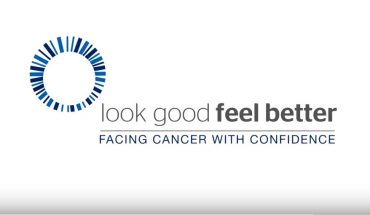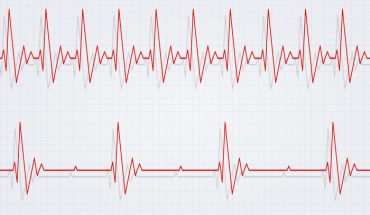Dr Taha Huda, a member of the Royal Society of Medicine’s sexuality and sexual health council, was one of the speakers against the motion at the recent Hippocratic Post debate The end of HIV?
It is my privilege to take part in this debate: The End of HIV?
Firstly, it is important to consider the global picture of HIV/AIDS in other parts of the world like sub-Saharan Africa which has been worst hit by this pandemic.
HIV infection rates are highest in southern and eastern Africa with more then one in four adults infected with HIV in Swaziland (29%prevalence) and higher than 15% prevalence in other countries like, Zimbabwe, Zambia, Botswana, South Africa and Namibia.
Initially, there was reluctance to admit to a generalised HIV/AIDS epidemic in for fear of creating panic, or discouraging tourism in Africa. “It all started as a rumour… Then we found we were dealing with a disease… Then we realised that it was an epidemic. And, now we have accepted it as a tragedy.” Thus said the Chief epidemiologist in Kampala, Uganda
Then in 1987 President Kenneth Kaunda- Zambia, announced to the world that his son, Masuzyo, had died of AIDS.
No other region has similar prevalence to those seen in sub- Saharan Africa. Africa is home to more than 26 million people living with HIV. Every day, there are more than 5,000 new infections. A young woman is infected with HIV every minute in Africa and women there are particularly disadvantages by HIV; they face the challenges of poverty, early sexual activity and are are often unable to negotiate safe sex. They also have to deal with issues like gender imbalance, no contraception, high fertility rates and breast feeding which can pass the infection onto the next generation.
A young woman is infected with HIV every minute in Africa and women there are particularly disadvantages by HIV; they face the challenges of poverty, early sexual activity and are are often unable to negotiate safe sex. They also have to deal with issues like gender imbalance, no contraception, high fertility rates and breast feeding which can pass the infection onto the next generation.
HIV typically impacts people in their most productive years of life; the scale of human suffering is massive. AIDS has changed demographics, challenged economies, shattered households and has undermined decades of social and economic development. The epidemic is fuelled by injustices. AIDS both exposes and exacerbates social and economic inequality.
Rather than seeing the end of HIV, I say although there has been significant progress in the global AIDS response, there is still much more work ahead.
Prevention
Progress on HIV prevention has stalled worldwide with 1.8 million people became newly infected with HIV in 2016. Stigma, discrimination and ingrained cultural and legal barriers continue to undermine prevention strategies and deter service scale-up in African countries.
Key populations living with HIV or at risk for HIV are being left behind. These include the young, adolescent, the sexually active, gay and transgender people, sex workers are unable to access HIV prevention and treatment services.
More 40% of people living with HIV still do not know their status; they constitute the pool for HIV transmission. More than 50% of all commercial sex workers in Africa are living with HIV; sex work is illegal, which creates an enormous barrier to access HIV testing (if police find condoms with a woman in some African countries, she could be arrested for prostitution.) Gay and transgender sex is illegal in some African countries, so those people are marginalised, rejected by their families and communities and are unable to access health care.
Worryingly, in the past 5-10 years, HIV incidence is plateauing. Access to retroviral medications are leading to declines in mortality, but not in incidence. A key reason is that globally approximately 40% of people living with HIV are undiagnosed. Furthermore, where risk is the highest (e.g., among adolescents and higher risk key populations), HIV testing coverage is the lowest.
Only 60% of people with HIV know their status, and the remaining 40% (14 M) still have to access HIV testing. The job is not even half done. On present trends, the official UN target of reducing the figure to 500,000 a year by 2020 looks hopelessly optimistic.
Only 60% of people with HIV know their status, and the remaining 40% (14 M) still have to access HIV testing. The job is not even half done. On present trends, the official UN target of reducing the figure to 500,000 a year by 2020 looks hopelessly optimistic.
The collapse of global AIDS funding
Spending has declined for 13 of 14 donor governments.
UNAIDS estimates US$ 26.2 billion will be required for the AIDS response in 2020 in low- and middle-income countries, with US$ 23.9 billion required in 2030. Yet this target is unlikely to be reached.
90% of infected people live in the developing world and that around two thirds of those infected live in sub-Saharan Africa
Treatment
Despite better access to anti retroviral (ARV) medication in Africa, (around 54 % of infected adults in Africa are currently on meds) far too too many people are developing AIDS and dying due to late diagnosis, late presentation to the care, advanced stage, poor engagement to the care, interrupted treatment & drug resistance. One in 4 have achieved viral suppression but 5% of people on ARV were resistant to at least one drug. This generation needs consistent access to ARV over a lifetime.
There is often poor access to monitoring and viral load testing. Health care workers rely on clinical and immunological markers to diagnose virological failure and we all know this is not evidence based and can compromise 2nd and 3rd line treatment options.
TB remains the leading cause of death and diagnostic techniques still rely on microscopy. There is no molecular or gene probe testing, coupled with a fragile health system.
Changing donor priorities and global economy threats, constitute major challenge to securing a sustainable financial support to the poor nations. Social and structural factors influence HIV epidemics and the efficacy of various intervention strategies. HIV prevention sciences research and programme implementers are increasingly moving away from focusing on individual-level behavioural Change’ interventions such as (Abstinence, Be faithful and use a Condom) style campaigns and interventions, and are instead recognising the importance of higher level social and structural determinants of HIV acquisition and transmission: Education, social capital/ mobility and migration, stigma, gender inequality.
Studies have shown that educated women are more likely to know how to prevent HIV infection, delay sexual activity and take measures to protect themselves.
Issues to be addressed with regard to global HIV infection
Politics play a major role regarding HIV/ AIDS pandemic. Positive political action has significantly heightened the global response to AIDS, also been an opportunity to correct underlying injustices and mobilize positive political momentum around issues such as gay rights. However, politics has been a negative force at times; stalling important policy developments particularly access to ARV in resource limited poor countries. Political denial, an unwillingness to engage in sensitive issues, such as those inextricably linked to HIV transmission, curbs progress. There is also the fear of offending powerful religious communities. Recent laws and policies in wide discussion regarding criminalisation of homosexuality in a number of African countries, such as Uganda and Nigeria, serve to stigmatise and marginalise this key at-risk population and hide infection and facilitate transmission. Political denial, an unwillingness to engage in sensitive issues, such as those inextricably linked to HIV transmission, curbs progress. There is also the fear of offending powerful religious communities. Recent laws and policies in wide discussion regarding criminalisation of homosexuality in a number of African countries, such as Uganda and Nigeria, serve to stigmatise and marginalise this key at-risk population and hide infection and facilitate transmission.
Africa has buried more than three quarters of the 39 million people who have died of AIDS since the epidemic began.
How can we forget this? What are we going to explain to our future generation about the serious and devastating effect of this disease? How are going to tell our children that every 15 seconds an African child loses a parent to AIDS?
AIDS will claim the lives of one third of today’s 15-year-olds in Africa.
The worst is still not over and the current epidemic will affect a whole future generation if we do not stand all together believing HIV is a mutual enemy that attacks rich and poor.
There will be no end to HIV if we do not alleviate poverty and provide food security, if we do not address social issues, stigma, gender-based violence and discrimination against sexual orientation and gender identity. If we do not ensure redistribution of opportunities and a fight for inclusiveness, we will not be able to reverse the AIDS pandemic.
- Dr Huda Taha: the end of HIV debate - 16th May 2018
- World AIDS Day – a global view of HIV infection - 1st December 2017






